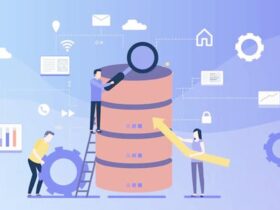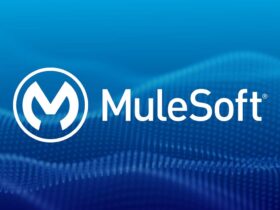Cognitive computing goes far further than human-computer interaction and artificial intelligence dating back to the 19th century—it examines principles of vision, memory, focus, vocabulary, intelligence and awareness. In AI, an algorithm for solving a specific problem is typically developed. Cognitive programming is looking for a common brain algorithm. This algorithm could solve a wide range of issues.”
Cognitive computing is the use of computerized models. If you want to more about it, you are right here. You will learn its definition, features, and job career prospects.
What is Cognitive COMPUTING?
Cognitive computing is the use of computerized models to simulate the human thought process in complex situations where the answers may be ambiguous and uncertain. The phrase is closely associated with IBM’s cognitive computer system, Watson.
About Cognitive COMPUTING
Cognitive computing is to reproduce human manners of thinking in a computerized model. Utilizing self-learning calculations that utilization information mining, pattern recognition, and natural language processing, the computer can mimic the way the human brain works.
A new class of questions is made computable by cognitive computation. It deals with dynamic circumstances marked by uncertainty and vulnerability, that is to say, it deals with human issues. Data also varies and are often inconsistent in these complex, information-rich and evolving circumstances. Users’ aims grow by understanding more and redefining their goals. The cognitive computing framework provides an analysis not only of knowledge sources, but also of factors, contexts and observations in order to respond to the complex nature of users’ perception of their problems. To do so, programmes also need to weigh up inconsistent facts and recommend a “best solution instead of “right.”
Why Use Cognitive COMPUTING
Cognitive computing can analyze emerging patterns, spot business opportunities, and take care of critical process-centric issues in real-time. By examining a vast amount of data, a cognitive computing system such as Watson can simplify processes, reduce risk, and pivot according to changing circumstances.
Cognitive structures compute the meaning. The contextual attributes, such as time, location, job, background or profile, are defined and extracted to present an information collection that is ideal for a person or based application engaged in a particular process at a given time and place. By having to wade through vast repositories of different material, they have machine-aided serendipity in order to identify templates and use these trends to satisfy the needs of the moment. Its features include-
- Adaptive
- Interactive
- Iterative and stateful
- Contextual.
Who uses Cognitive Computing?
The cognitive computing landscape is dominated by 3 major companies IBM, Microsoft & Google. With IBM being on top of all other competitors. IBM has reportedly invested $26 billion dollars in big data analytics and artificial intelligence.
Certification for Cognitive Computing
- Cognitive Computing AI
- Cognitive Computing ML
- Cognitive Computing data science
Features of Cognitive Computing
- Adaptive
- Interactive
- Iterative and stateful
- Contextual
Cognitive Computers Job Responsibilities
- Ability to develop deep domain insights and provide expert assistance.
- A step ahead of engagement systems, these have decision-making capabilities.
- Discovery involves finding insights and understanding a vast amount of information and developing skills.
Cognitive Computing Job Role
- Cognitive Technologist
- Application Architect
- Cognitive Computing associate
- Cognitive Developer
Top Location for Cognitive Computing Job
These are the cities you can build your career in Cognitive Computing
- Bangalore
- Pune
- Hyderabad
- Delhi.
Name of the companies hiring for Cognitive Computing job
- IBM
- Microsoft
- Capgemini
Salary packages for Cognitive Computing Job
The average salary of a Cognitive Computing is ₹2,41,008 and it ranges from ₹96,000 – 7,68,000.
Where and how we are using this technology in real-time?
In general, cognitive computing is used to assist humans in their decision-making process. Some examples of cognitive computing applications include supporting medical doctors in their treatment of disease.
Cognitive computer systems reframe the essence and the increasingly ubiquitous interactive world of the relationships between individuals. They can assume the role of the user’s assistant or mentor, and in certain problem resolving scenarios can act practically independently. The limits of these systems’ systems and environments continue to be fluid and clear. Their success may be normative, suggestive, instructive or enjoyable.
Do you need basic skills to need to learn this course?
- Machine learning
- Coding
- AI learning
- Basic Networking.
Conclusion-
Well, The minimum of vSphere/ESXi, vCloud, must be completely conscious of it. A good analytical strategy driven by troubleshooting would have the benefit to achieve this. You need to provide a detailed understanding of vSphere/ESXi, vCloud at a minimum. A good empirical methodology motivated by troubleshooting gives the edge in this area.





Leave a Reply